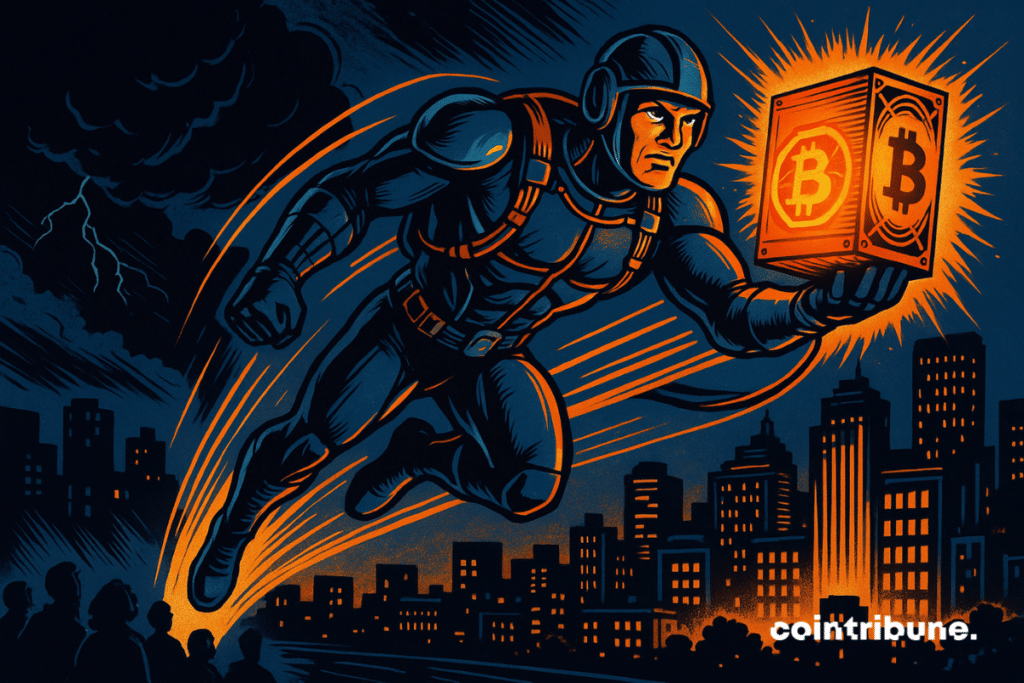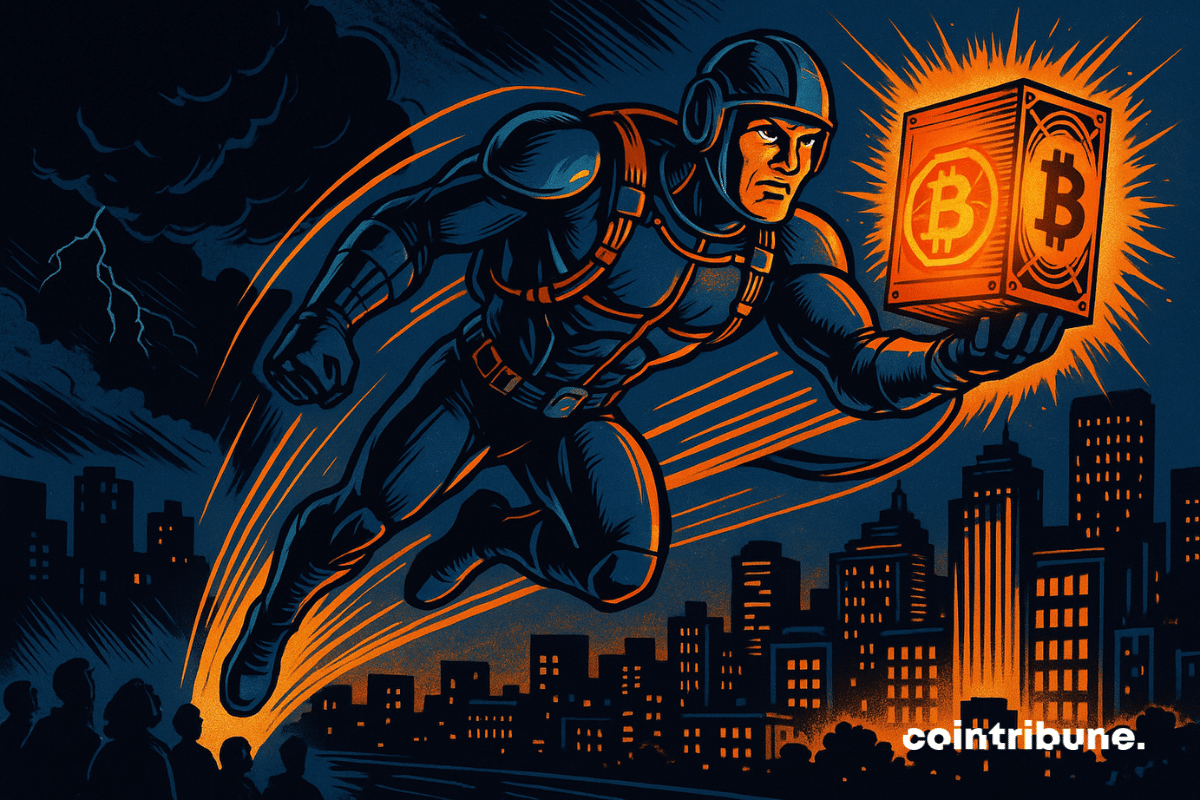Blackout in Spain is an opportunity to remind that the bitcoin industry could certainly allow disaster.

In short
- The University of Cambridge presents bitcoins as a chance for network administrators.
- Bitcoin avoids the lunges and reduces methane emissions in the atmosphere.
- What do bitcoin miners do? What is the use of electricity consumed?
- Bitcoin, an international reserve currency in power.
Bitcoin, how much gw?
As a sign of the University of Cambridge she has just published a report in which he qualifies the bitcoin industry “A key contributor to network resistance” By offering a network manager and “Strategy focused on demand”.
The results are based on a survey of 49 minor bitcoins representing 48 % of the total calculation force. Note that the North American minors represent 80 % of the sample, twice as much as their real weight around the world.
Verdict: The total annual electricity consumption of bitcoin network revolves around 140 TWh and generates 40 MTCO2E greenhouse gas emissions. This corresponds to the electricity of 7.3 GW, comparable to the energy of the Czech Republic.
But surprises seem to be resistant energy sources in the end (52.4 %). The hydroelectrity comes first (23.4 %), followed by wind (15.4 %), nuclear (9.8 %) or solar energy (3.2 %). Fossil fuels are mainly natural gas (38 %) and coal (9 %).
Bitcoin industry consumes 0.54 % of global electricity production. Other rare information, minors claims to pay an average of $ 0.045 per kWh. The price of this friend suggests that it is mainly electricity that would otherwise be unnecessary, that is, it produced entTR.
So much for raw figures. As mentioned in the introduction, the report also emphasizes the asset of the bitcoin industry to balance the electric networks. The Spanish government would do well to read …
In fact, bitcoin minors offer greater resistance to sudden collapse, the reason is that they can disconnect immediately from the network.
Luxury fuse
According to demand, the balance of the electric network seems to be increasingly important to adapt the development of intermittent energy and puzzles that represent for network administrators.
Historically, the network frequency was maintained at 50 Hz by increasing or reducing the production of “advanced” plants. These power plants are designed to start and stop quickly during requirements or in the case of improvised failures. These are usually dams and gas power plants.
In Spain, however, the gas represented only 3 % of electricity production at the time of the failure. The priority has 73 % for wind and solar energy. Unfortunately, it seems that the predominance provided by a renewable source is largely responsible for outages:
And this is where the Bitcoin minors come into the game as a variable adaptation to demand. They offer solutions to release the load on network operators to balance demand for electricity in real time. No other industry can respond so quickly.
The report also emphasizes that 57 % of the minors were deleted on request in 2023, which brought a total of 888 GWh to the network. This electrical symbiosis works so that Texan Network (ERCOT) manager recently canceled the construction of several gas power plants due to 3 GW, which can return minors at any time.
Horn on the cake, miners are an important financial unexpected for energy -which are cruelly needed to fund the energy transition.
Bitcoin vs. Methane
The heat produced by the bitcoin industry can also be recycled. Urban heating, greenhouse cultivation, public pool heating, etc. There is a lot to do because heat produces 40 % of global CO2 emissions.
Many projects are underway, especially in Scandinavian countries:
The big advantage of minors is able to settle almost anywhere. Satellite connection Starlinkk is sufficient to connect to the network.
This dexterity allows you to use gas when it comes to oil extraction. It is a gas that would otherwise be burned with a torch or worse, released in an atmosphere due to lack of ability to transport it to civilization.
This methane (CH4) is burned in CO₂ to reduce the greenhouse effect. CO₂ is truly 80 times less impressive than methane for 20 years. However, the combustion rate is often closer to 90 % than 100 %, for various reasons like the wind.
The alternative is to convert gas to electricity to power the machines of minor bitcoins. The combustion is then almost 99.9 %. The systematic deployment of minors BTC would help fight global warming because 140 billion cubic meters of natural gas (357 MTCO₂e) are made every year.
According to the report, this type of gas comes from 3.3 % of electricity consumed by minors. In other words, the share of permanent energy consumed by a bitcoin network is not 52.4 %, but rather 55.7 %.
What are the BTC minors doing?
If you are still there, it is because the subject is particularly interested. Lesson pulling:
It is useful to correctly represent things for separating the bitcoin network in two. On the one hand, the transaction and on the other side the work of the minors.
However, cryptography is the cornerstone of the whole. The wallet is nothing but a pair of private and public keys. We speak in the jargon of public key cryptography (or “asymmetric”).
Obviously, bitcoins (pictures, etc.) are “suspended” on public keys generated from a private key. These public keys are commonly called “bitcoin addresses” used to receive bitcoins. Only the corresponding private keys allow you to move bitcoins to another public key, AKA to make a transaction.
These transactions are collected in “mined” blocks on average every ten minutes. This process (proof of work) is another big page of the bitcoin network. It requires significant IT sources that protect the network from “Sybil” attacks.
Pow requires heavy investment in ASIC that cannot be used for something other than bitcoins. The attack on bitcoins is therefore economically impracticable because it would cost billions of dollars.
Still there? So let’s move on.
The block consists of a header containing some basic data, such as the hash of the previous block (hence the expression of the blockchain), horoding, nonce, Merkle tree root, etc. And then, of course, several thousand transactions.
Full description go to this article: Bitcoin-what can we find in the “block”?
Evidence
The Pow consists of desperately changing Nuncio (ie any number), which after a chopped cryptographic algorithm SHA-256 with the header of the block creates hash.
This hash is specifically a number. “Block mining” means finding a hash smaller than the target number according to experiments and errors. The goal is permanently modified to maintain the pace of the block approximately every ten minutes.
The block and obtaining a 3 125 BTC return takes an average of 480,000 billion billion. It is a gigantic number that represents almost 70 times the number of grains of sand in the Sahara desert. Or seven times the estimated number of stars in an observable universe.
Once the hash is found, the nodes check that it respects all the rules of the protocol. Otherwise, the block is rejected and the minor loses money.
These rules include without limiting the hash of the block is less than the target value; that all transactions are valid; That the amount of the price paid to the minor is accurate; that the header contains hash of the previous block, etc.
We will complete with some information obtained in the Cambridge report on ASIC products. The three main (Bitmain, Microbt and Canan) control 99 % of the market. Bitmain itself builds 82 % of ASIC.
We will also learn that in June 2024 the average ASIC efficiency was estimated at 28.2 d/th. Or improvement of 24 % of one year to another.
Bitcoin, another international currency of reserves
In addition to the answers provided by certain energy and environmental problems, Bitcoin homelessness is primarily a reserve currency in power. According to Vanecky, China and Russia began to set a fraction of their bitcoin transactions…
The CEO of Blackrock did not say anything else in his annual letter to investors. Larry Fink thinks that the dollar will lose the status of global reserve currency in favor of bitcoins if the United States does not absorb its budget deficit.
As such, the International Investment Company Vaneck has made small calculations. Buying one million bitcoins would allow the United States to reduce US public debt by 35 %by 2049.
The largest Russian minor, Bitriver, believes that in this context, “The development of the mining industry is strategically important for the main global financial powers, including Russia,”.
Uncle Sam is most likely to accumulate bitcoins before the end of the year. There is no much time to accumulate before the race will enter nations around the world …
Don’t miss our article on this topic: The US ready to leave the “exaggerated privilege” for bitcoins?
Maximize your Cointribne experience with our “Read to Earn” program! For each article you read, get points and approach exclusive rewards. Sign up now and start to accumulate benefits.
Reports of bitcoins and geopolitics.







